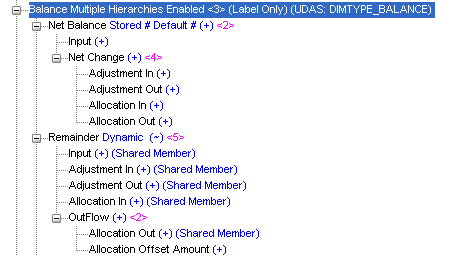Start with Dimensions
Application data stored in a database is organized by dimensions, which are data categories used to organize data for retrieval and preservation of values. Dimensions usually contain hierarchies of related members grouped within them. For example, a Year dimension often includes members for each time period, such as Quarter and Month.
Profitability and Cost Management includes the following dimensions:
-
Business dimensions that reflect the business-specific elements of the application, such as departments, accounts, activities, customers, or products
-
Point of View (POV) dimensions that identify a specific point of view or version of the application, such as year, scenario, period, and version
-
Attribute dimensions that enable analysis based on the attributes or qualities of dimension members, such as the size or color of products
-
Alias dimensions (optional), used to assign alternate names, descriptions, languages, or other items
-
System dimensions that are reserved for use by Profitability and Cost Management for system requirements
Profitability and Cost Management has two system dimensions:
-
Rule dimension, that stores allocation instructions as Rule members for up to 1000 rules:

-
Balance dimension, that stores calculation inputs and outputs as Balance members:

When each rule runs, you can trace all the inputs and outputs and see how they balance (Rule Balancing for Application Validation).